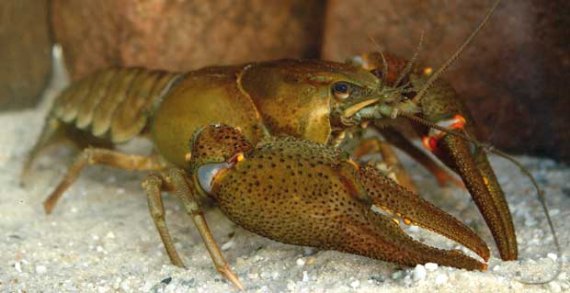In 2012 there is precisely one Dutch population of the European crayfish left: a few hundred of the creatures in a pond in Arnhem. Not even an ideal habitat, but one that has been isolated enough for the crayfish to survive there. ‘It is a miracle, in fact, that they have lasted so long,’ says Alterra researcher Fabrice Ottburg. In the past, the crayfish inhabited streams, rivers and ponds throughout the south-east of the Netherlands. In November, Alterra presented a report on the dwindling water creature, commissioned by the ministry of Economic Affairs. About 20 organizations, including water boards, government bodies and nature conservation organizations, are behind the proposals for monitoring, breeding and reintroducing the only indigenous Dutch crayfish. In collaboration with nature conservation organization Geldersch Landschap, Alterra bred the first crayfish this year, for release into the wild next summer. Ten new habitats will be created so that the species does not suddenly disappear. ‘Spreading the risks,’ as Ottburg describes it. To increase the crayfishes’ chances of survival, the researchers will pick locations without their natural enemies.
Beautiful creatures
Earlier reintroductions in Germany were highly successful, says Ottburg. So there is good reason for optimism. What is more, the main reasons for the decline of the crayfish have been dealt with: the canalization of streams, water pollution and the influx of exotic crayfish. Ottburg: ‘In the last 10 or 15 years, streams have been given the space to meander and water quality has been improved, so that there is more diversity of habitats again.’ There are still threats, however. Including competition from invasive crayfish, some of them carrying diseases. Strikingly, Alterra published a report about the crayfish as early as 2003, with an analysis and recommendations that are still relevant now. ‘I don’t know why the plan didn’t get off the ground then,’ says Ottburg, who was involved in 2003 as well. ‘These are often long-haul projects. You need a ‘crazy’ who is willing to get things going, and the political will is not always there.’ This time Ottburg and his Geldersch Landschap colleague Ivo Roessink are going to take the lead. ‘They are beautiful creatures,’ he says. ‘I don’t think we should let them slip through our fingers.’

